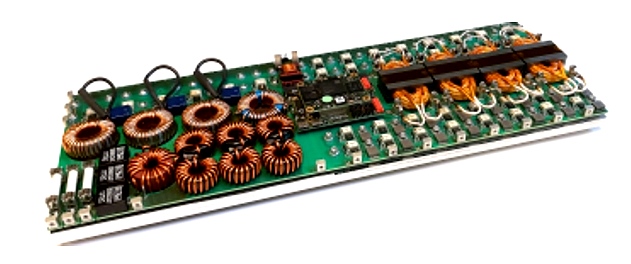
Electric vehicle protection board PCBA uses high-voltage devices
Product description
As the climate environment continues to worsen, countries around the world are paying great attention to environmental protection. One of them is to actively reduce vehicle exhaust emissions and vigorously promote new energy electric vehicles. Judging from current market trends, the voltage demand for electric vehicle equipment continues to increase, and even some Devices considered relatively low voltage are also pushing past established baselines. Technology to handle high voltages is not newtopic, but due to the increase in the number and variety of new demands, both fabs and testcompany, high-voltage testing has been given top priority.
in electric carshigh pressureThe demand for devices is increasing. In order to improve the cruising range of vehicles, the automotive industry needs to reduce the weight of cables and reduce the loss of power distribution. Considering that the trend of the entire automobile is towards high voltage, this includes the battery and power within all subsystems.converter, as well as individual components such as display devices, forsemiconductorFor suppliers, being good at high voltage and high power design will become very advantageous.
Silicon carbide was initially viewed as a relatively new and unproven material, butTeslaAlready using silicon carbide extensively in their cars and applying this technology to their power managementintegrated circuit(PMIC).This sends a message to the entire industrySignal, silicon carbide can be used boldly, which will trigger the car manufacturer's concern about high pressure.InverterWaiting for equipmentSpecificationparameterRe-examine and think.
silicon carbide (SiC) andgallium nitride(GaN), as an emerging wide-bandgap semiconductor material, shows significant advantages in high-voltage applications, but it also brings new challenges. The packaging materials of these semiconductors are more susceptible to damage in continuous high-voltage environments. Therefore, From design to packaging to testing of the final device, new ideas and methods are needed. During the testing process, how to avoid damage to these fragile materials under high voltages such as automotive voltage requirements ranging from 40 volts to 2 kilovolts , wafer fabs and test institutions are making high-voltage testing a priority research and development topic.
carindustryCable weight reduction and power distribution losses are being sought to extend the range of electric vehicles, and high-voltage technology can play an important role in this process. Expertise in high-voltage and high-power design will be key to the future growth of semiconductor suppliers .At the same time, as the voltage increases,ManufacturerThe challenges of our testing are also becoming increasingly apparent, such as the impact of loss and dynamic RDS(on) that may lead to longer test times and test devices, and in these devices, we must deal with higher power issues. For exampleDrive circuitsilicon carbide in as well as the 10 to 30 amps that may need to be handled in rechargeable batteriescurrent.So now more probe pins need to be used, and this may lead to an increase in test and development time. In addition, for stress testing for high voltages, we need to reconsider. Traditional devices perform combustion tests at a specific voltage, and then they drop VDD , but does not reduce the HVS limit. Now, the equipment suddenly has to bear more stress because it has a greater tolerance for overvoltage.
In addition to the regular challenges, there are other puzzles to solve. For example, when performing a glitchsimulationThere may be 16 or 32 test positions. Once one of the positions fails, yourpower supplyIt may be disconnected. In order to avoid this problem, electric vehicle manufacturers usually performPower management, so even if one part fails, the power supply must continuepowered by, and continue to monitor other locations to avoid dangerous consequences such as short circuits and fires. This entire electronic control system is in a high-voltage circuit environment, and it is not easy to achieve safe and stable control.
Send Inquiry
